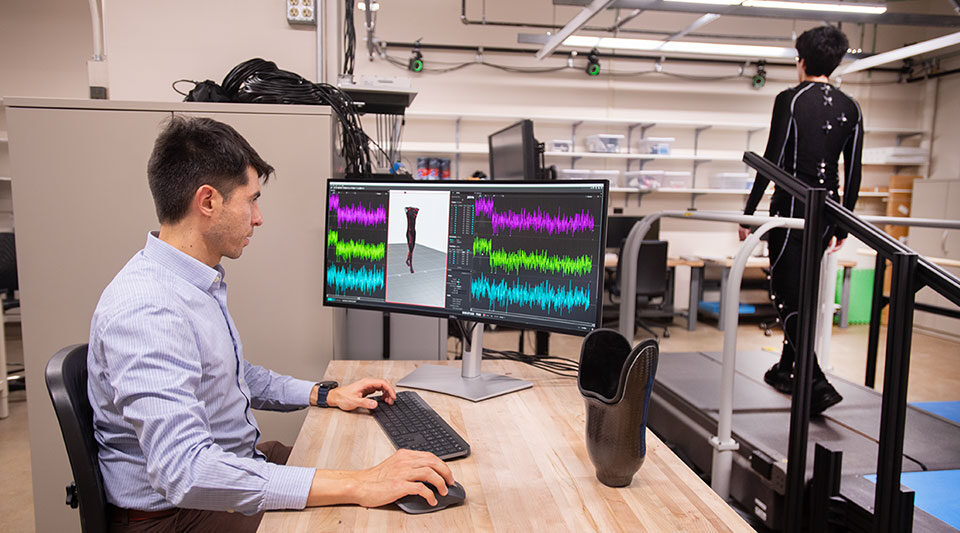Powered prostheses hold promise for improving the lives of people with limb loss. Yet despite recent, rapid development of new designs and materials, current devices are often heavy and uncomfortable.
Edgar Bolívar-Nieto, assistant professor of aerospace and mechanical engineering at the University of Notre Dame, is designing an electrically powered lower-limb prosthesis (wearable robot) with enough computational capability to make it “smart” while also lightweight.
“The current powered prostheses can make people feel tired because they’re supporting all that weight on their residual limb, particularly when swinging the leg forward or backward,” said Bolívar-Nieto.

Bolívar-Nieto addresses this by using springs to mimic the elasticity of tendons and ligaments that naturally store and release energy. Spring elasticity makes it possible to reduce the prosthesis’ motor size and energy consumption.
Unlike unpowered prostheses, powered prostheses can inject positive mechanical energy and allow users to switch between different types of locomotion. While current devices offer a choice of preprogrammed movements, Bolívar-Nieto’s lab is devising prostheses that can anticipate movement.
“We’re designing algorithms that understand fundamental locomotion needs, such as balance,” said Bolívar-Nieto. “Algorithms that satisfy locomotion principles instead of preprogrammed movements could make it possible for a person to walk, climb stairs, even dance.”
To make a prosthesis smart enough to understand these needs, Bolívar-Nieto measures the force the ground exerts on the feet (ground reaction forces) by using a sensor-embedded treadmill. The resulting data is used to formulate novel, movement-predicting algorithms.
Smart features alone are not enough; comfort is foremost. Ulcers and other adverse reactions can develop at the socket where soft tissue comes into contact with hard components. Currently, this complex and dynamic interface is, according to Bolívar-Nieto, poorly understood.

The lab will gather data on this interface by using prosthetic socks made from electronic textiles and worn on residual limbs. The data generated can be used to map pressure points and identify potential sources of discomfort over extended periods.
“No one wants a big, clumsy gadget,” said Bolívar-Nieto. “Our ideal solution is to enable movement that feels natural.”
Bolívar-Nieto directs the Wearable Robotics Laboratory (WeRoLab). He joined the Notre Dame faculty in November 2021.
— Karla Cruise, Notre Dame College of Engineering; photos and video by Wes Evard, Notre Dame College of Engineering
